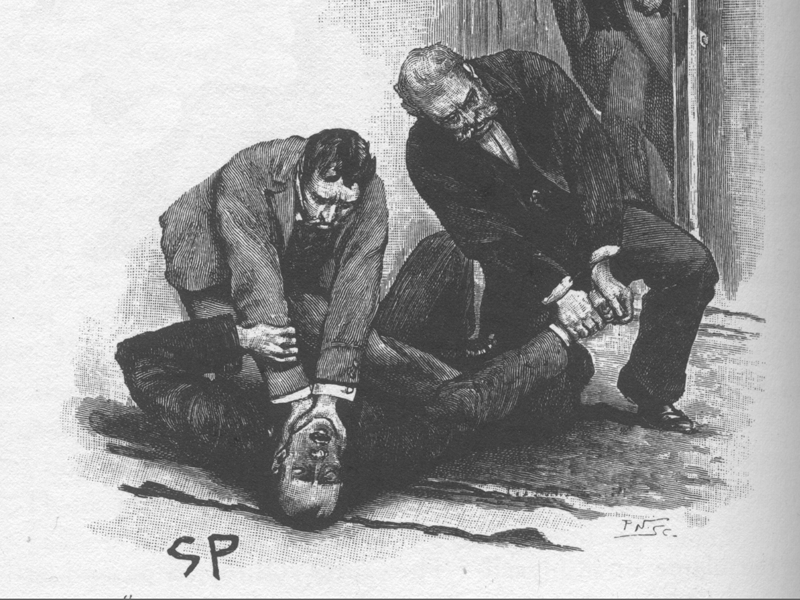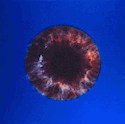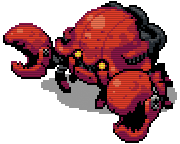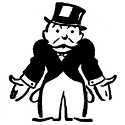|
Close the case now or keep poking around for clues? I'll give the thread 24 hours to decide this one.
|
|
|
|

|
| # ? Apr 26, 2024 15:36 |
|
Any tie breaking votes? Another clue, or on to the quiz? Not sure if enough people are up for voting on this case, so you get both (clue incoming, then quiz). Kangra fucked around with this message at 23:32 on Feb 2, 2016 |
|
|
|
Case 3, Clue 10 43 WC (London University) We find Mortimer Murray in his office in the midst of a heated debate with Jean-Paul Beauclair. Inspector Lestrade stands to one side watching Beauclair and Murray who are seated at a table. On the table between them is a charred section of a predominantly blue painting, its subject matter no longer recognizable. No one seems to notice us as we enter and stand just inside the door. "Mr. Beauclair, I am not an art expert, but I am an expert on paint pigments and their chemistry. I am telling you that any art work which contains Prussian blue is not from the seventeenth century; the process to create Prussian blue had not yet been discovered!" "Monsieur Murray, I have devoted my life to the study of art. I am the world's expert on de Kuyper and I tell you this painting was painted by de Kuyper. I have seen every de Kuyper painting and I will stake my reputation that this painting is done by the same hand — the hand of de Kuyper." Murray reaches for the magnifying glass that lies on the table. He removes a long thin needle from a case and pushes it through the painting. He then looks at the spot with the magnifying glass. "Look at the smoothness of that hole! Surely you are familiar with the needle test. This paint can't be more than 30 years old at most." We exit as quietly as we entered, leaving the two men locked in their stubborn argument, neither willing to yield in this battle of science and ego. More information on Prussian blue can be found on the internet. CPs visited: 24 WC, 13 SW, 23 SE, (41 NW, 4 EC), 15 EC, 38 SE, 11 SE, 34 SE, 22 SW, 21 NW, 43 WC.
|
|
|
|
Quiz 3 Part 1 1. Who was responsible for the theft of the de Kuypers at the National Gallery? 2. Why were the de Kuypers stolen? 3. Who murdered Matthew Cole? 4. How was Donet involved in the case? Part 2 1. Was Herbert Colman involved in the theft? 2. What was the wine which Donet enjoyed? 3. Which two drugs did Holmes occasionally use? (n.b. tobacco does not count)
|
|
|
|
Whoops. I've been a bit preoccupied, but, okay, here goes. Before I get to the questions, something strikes me; I wonder if Mr. Norris was a victim as well, what with the mention of Donet. It's possible the real conspirators are Cole and Donet, not Cole and Norris. Or it could be the three of them together. Anyway: 1-1. I'm going to say Matthew Cole. 1-2. To hide the fact that they were forgeries, which would presumably become clear if they were hung next to authentic paintings. 1-3. (Either Norris or Donet. I'm not sure. Someone help me out here.) 1-4. The introduction says he provided the certificate of authority for the painting, so I assume he was in on the deal. 2-1. Who?  I guess the answer is no. I guess the answer is no.2-2. (We never met the guy... no idea.) 2-3. Cocaine and morphine.
|
|
|
|
I was assuming the certificate of authenticity, and Donet's signature on it, were forged as well. I mean, if you've got the criminal know-how to forge a painting, surely forging a signature wouldn't be that much more difficult, right? Most paintings were signed somewhere, so you'd have to forge a signature anyway if you're forging a painting... However, on second thought, if they forged his signature, he'd have found out about it, right? I mean, you're a well-known art expert and a new painting shows up, you're going to inquire. And if you find out that you supposedly signed a certificate of authenticity when you did no such thing, you're going to raise a stink about it. So it's not likely that they faked his signature... unless he's been murdered, too, and we just didn't find out about that. But I have no idea what clues we missed that would have led us to learn Donet's favorite wine or about his involvement in the case. Is he available in the directory? Could we have done a lookup on him and interviewed him to find out more, possibly leading to an evidence chain we didn't see? My answers: 1-1) Concur with Hyper Crab Tank: it's clear that Matthew Cole was the forger. 1-2) Concur with Hyper Crab Tank: the theft was a cover-up. 1-3) I'm going to go with Norris. My best guess is that Donet was a red herring for us to chase. 1-4) He was the art expert whose signature was on the certificate of authenticity. I don't know whether he was in on it, since we never found his clue chain. But I'm guessing he was in on the conspiracy, falsifying the certificate in exchange for a share of the auction proceeds. 2-1) Concur with Hyper Crab Tank: no. 2-2) Also no idea. 2-3) Cocaine, and I want to say heroin rather than morphine. A quick lookup of Wikipedia* says that heroin was synthesized in 1874, so it's possible that Holmes would have had access to it. But since it was probably relatively unknown when Doyle was writing, I think I'll have to go with morphine as my official answer. * I won't look up Doyle's works to answer this question, though: that would be cheating.
|
|
|
|
Case 3 Solution Quiz 10: 1. Who was responsible for the theft of the de Kuypers at the National Gallery? Brady Norris. (25) 'Responsible' is kind of a vague term, but yes, Norris is behind it. I think we understand fairly well that Cole committed the theft under Norris's orders. 2. Why were the de Kuypers stolen? Norris was afraid they would be found out as forgeries. (25) 3. Who murdered Matthew Cole? Brady Norris. (25) 4. How was Donet involved in the case? He was the Master Forger of all the de Kuypers. (25) Yes, all of them. This will be explained in the wrap-up, although there was the merest hint of it in the London University clue. I'd say 20 points for knowing he painted the stolen ones, 10 points for having forged the certificate. Although I feel this should have been a Part 2 question. Part 2 1. Was Herbert Colman involved in the theft? Yes, he drove the getaway carriage. (10) This is probably the first 'Part 2' clue that is way off the normal line of investigation. Look for Holmes' throwaway answer that he couldn't possibly know. 2. What was the wine which Donet enjoyed? Montrachet. (10) Direct interview with Donet is the only way to know this. But I'm still not totally sure how one finds Donet - he's at the Langham Hotel. 3. Which two drugs did Holmes occasionally use? Cocaine and morphine. (10) There are other references, but the most concise is from The Sign of the Four: quote:"Which is it today," I asked, "morphine or cocaine?" Holmes solved this case in 5 Clue Points Review those clues and see if you can find any inkling of Donet's involvement. It's apparent that Holmes is always up to other things, which quite reasonably are not considered clue points for him in terms of the Part 1 questions, but this time I think it really pushes it by having Donet be the fourth question. I'd give the thread ~95 points - 20 for extra clue points = 75 points. [London University is free because I kind of forced it - it was better to know it before reading the solution.] The points don't really matter, and I hope this was still a fun case; it is one with some of the bigger rabbit holes to jump down. It's a detailed case to explore even if the quiz expects some leaps of logic.  We are seated at Baker Street along with Sir Simpson. Holmes is standing silently in front of the fireplace, his eyes fixed upon the flames. Other than a monosyllabic greeting, he has not said a word since we arrived five minutes ago. Finally he turns towards us and addresses Sir Simpson. "I guess the best way to start, Sir Simpson, is to give you a factual account of what has happened. I think it would be best if you wait until I have finished the complete story before asking any questions." "Whatever you wish, Mr. Holmes," agrees Sir Simpson. "To start with, there are no de Kuypers. They are all forgeries. Forgeries made by one man. It has to be one of the greatest art hoaxes in history and done to satisfy the ego of its perpetrator, Pierre Donet." "Donet is a very talented artist, but the style he loved and in which he was an expert had been declared passe by the art world. He set out to create de Kuyper: he wrote his biography, he painted his pictures and the art world embraced this created image. Many major art historians placed de Kuyper in the category of a minor master; art investors raised him to the category of a major master. What started out as an exercise to demonstrate the fickleness of the art establishment turned Donet into a world-respected art expert on de Kuyper and it turned out, for Donet, to be quite rewarding financially. This whole story is not without its humour." "The next chapter in the story must have given Donet great satisfaction. Brady Norris, not knowing that the de Kuypers were forgeries and Donet the forger, but being familiar with Donet's work, approached Donet and proposed that he forge a de Kuyper painting. One can only imagine the will power it took Donet, upon hearing this proposition, to hold back the laughter. How could Donet pass up such an offer? He agreed to Norris' plan. He would forge two de Kuypers and authenticate them. Donet saw no reason to enlighten Norris to the fact that he had forged all the known de Kuypers. "Norris informed you of the upcoming sale of two de Kuypers. He made sure the National Gallery would be the successful bidder. Everything went according to plan, until you upset it." "Me!" exclaims Sir Simpson. "Yes, you arranged for the de Kuyper show bringing together all of the de Kuypers and the leading experts, and putting the spotlight on the two paintings. Remember, Norris didn't know that the other paintings were forgeries; he thought that only the National Gallery's were. He panicked, afraid he would be found out. He made plans to have the de Kuypers stolen. He hired Matthew Cole, a minor thief, to help him. He gave Cole his keys; the rest was simple. "Norris arranged to meet Cole after the robbery and retrieve the forgeries. Perhaps Cole, thinking he had possession of valuable masterpieces, tried to demand a higher price for his labour. Or perhaps Norris panicked at the idea of a witness and potential blackmailer. For whatever reason, Norris killed him, thus both lowering his overhead and getting rid of a witness with one blow of his cane. He then set fire to Cole's room hoping to destroy evidence of two crimes at once. "That's the story of how the perfect crime went wrong," concludes Holmes. "Unbelievable," responds Sir Simpson. "What about Herbert Colman?" asks Wiggins. "He helped his friend Norris, but he knew nothing about the forgeries or the murder." "And Donet?" "Donet was here to enjoy the spectacle of the art world paying homage to his creation. How could he miss it? It was the crowning touch to his genius. Norris came to him with his fears, but Donet told him not to worry. If he had only believed Donet, everything would have worked out to his satisfaction." "Well, Sir Simpson, that's the whole story. We should summon Lestrade and let him handle the arrests." "What will happen to Donet?" asks Wiggins. "I think you will find that he is on his way back to Belgium. I don't think he will suffer any legal repercussions. The museums will just put the paintings in storage and keep their reputations intact. I don't think they want Donet in prison with time to write a book on how he hoodwinked the art world."
|
|
|
|
Not a bad score considering we had a lot of the details pegged early on and were chasing down some fiddly bits because there had to be a trick somewhere. Also considering Mr not-appearing-in-this-mystery was apparently a major player.
|
|
|
|
... what? No, what? How were we supposed to know Donet's role from Holmes's clue points alone? I'm guessing part of the clue is that two experts are simultaneously 100% sure of two contradictory facts: The paintings are without a doubt not from the 17th century, but they are also without a doubt painted by de Kuyper. Taking both of these statements as true means the man called de Kuyper cannot have lived in the 17th century, but rather some other time - perhaps today, even. However the step from that to Donet specifically is baffling. If it's possible for one expert to be taken in, why not two? What is there to say that Donet and Beauclair weren't both taken in by an unknown, third party who would be the "genuine" de Kuyper? e: Donet isn't even mentioned in any of the clue points Holmes visited! Hyper Crab Tank fucked around with this message at 23:19 on Feb 6, 2016 |
|
|
|
Bizarre. Can you post the Langham Hotel clue point?
|
|
|
|
Okay, I actually found out how to find Donet, and what is probably the clue to figuring out the forgery. If you visit Dame Smedley (incidentally, the Smedleys are brother and sister), she mentions that Beauclair had gone with him to the Langham Hotel. But she also points out that while almost everyone was quite taken with Donet, whom she'd invited herself, Norris seemed put out by his presence. So I suppose with a few other hints you might pick up on his involvement. I simply think it should have been a Part 2 question, since the person who committed the forgery is entirely immaterial to the case at hand. It's a nice thing for Holmes to find out on his own and lord over us, they just shouldn't have deemed it critical. It's certainly possible to find clues to Donet's involvement, it's just kind of hard and not something you'd expect in the course of the theft investigation. I was about to post Donet's clue, since I was wondering if I missed something in it, but it's fairly long and I think Dame Smedley is the one point needed. Donet is described as a 'tall, thin man in his late fifities ... nattily dressed in the latest Continental style'. He says he only arrived in London yesterday afternoon, and says that he indeed signed the certificate. He does mention that he was approached by Rudolf Steiner, a Berlin lawyer, who was 'representing a client who owned the two de Kuyper paintings' and how he visited the man's hotel room: quote:"Let me see, it would have been the first week of June. June 5th of last year, I believe." Rudolf Steiner is the biggest clue, but there is no way to follow it. If you go back to 221B (or, for some inexplicable reason, the telegraph office), you find a telegram from Berlin for Holmes. Steiner says that he was in fact hired by Donet himself. There's a another person (I don't know who) at 13 WC who states that they arranged the auction with Armitrage's according to Steiner's instructions, but that only seems to confirm Donet's statement. Lloyd's has a copy of the certificate, but nothing about it seems out of the ordinary. Beauclair can also be found at the Metropole Hotel, but he gives out nothing about Donet. The library has an Encyclopedia of Famous Artists which gives his dates as 1580-1612, mentions that Donet was the first to discover a painting, and that de Kuyper's understanding of colour is more in tune with modern times, but his brush strokes mark him as a student of Rubens. Henry Ellis (the guy at The Times who works the continental desk) will mention that something was 'fishy' about the whole de Kuyper thing from the start, and then goes on vaguely about some people being angry (presumably Hypsilanti). Langdale Pike says of Dame Smedley's part that Donet was very popular and that 'he must know more about de Kuyper than de Kuyper himself'. Kangra fucked around with this message at 02:01 on Feb 8, 2016 |
|
|
|

|
| # ? Apr 26, 2024 15:36 |
|
I have a few more notes on the case, and then some notes on what's next. Brady Norris, if you visit him, is fairly straightforward at denying his involvement. He does, of course, carry a large cane, the kind one might use to beat a person over the head with. He doesn't mention Donet. He does claim that he came directly home from Dame Smedley's party. I don't recall exactly the path you can take to track down Colman (somebody mentions he was a school friend of Norris, and I think if you go to the carriage stables someone there knows him), but he can eventually be found at a bar. He denies having done anything with Norris last night, but he' seems to deny it just a bit too vehemently (if incoherently). It's not totally obvious he was involved, but it's enough to raise suspicions. This is, as mentioned, way off the course for the investigation. The quiz question is one of those meant to make up for time spent on an unimportant detail. Now, as for the thread. We've finished the three cases in the base game I wanted to do. Which means it's time to move on to the expansion, The Mansion Murders. These cases make use of the mysterious red address at 100 SW (the only triple-digit location). It's a large mansion where there can be clue points in each room, so there will be an extra map for it. As far as I know, these have not been updated/re-released, so if you've only played the new cases, you can join in! There are five cases in the pack, and I would do all of them, but two aren't worth it. One is essentially a side-story to one of the original cases, doesn't use the mansion at all and also ends up literally involving the Maltese Falcon. (It's fairly obvious that at least some of the creators wanted to make a 1930s game in this vein, and they did, it's called Gumshoe, but I've never seen a copy of it let alone played it). The other one has the problem that it's basically a puzzle — you have to find three unordered lists of people and figure out who's missing from one of them. Tedious for me to enter, and trivial to solve with a computer. It also semi-spoils another of the original cases by having a potential suspect show up. Of course, I also don't want to end up leaving a big gap in the middle of a case again. What I'll probably do is take a bit more time in between the cases (and as much as possible, check clues beforehand to note any big mistakes like the guard mix-up). I'd also appreciate any feedback on what I should do. Take more time between clue points to allow for discussion? Go faster to keep the thread active? Let me know.
|
|
|








